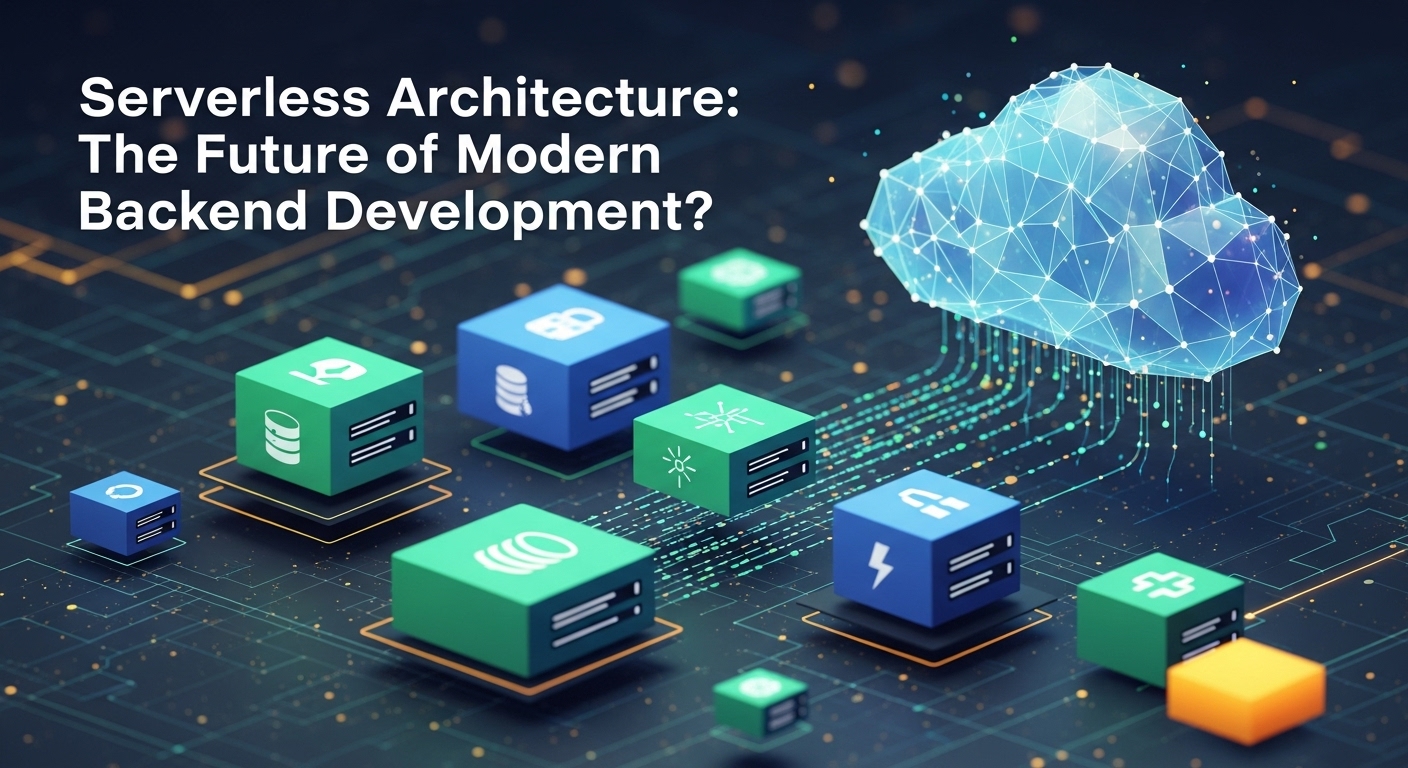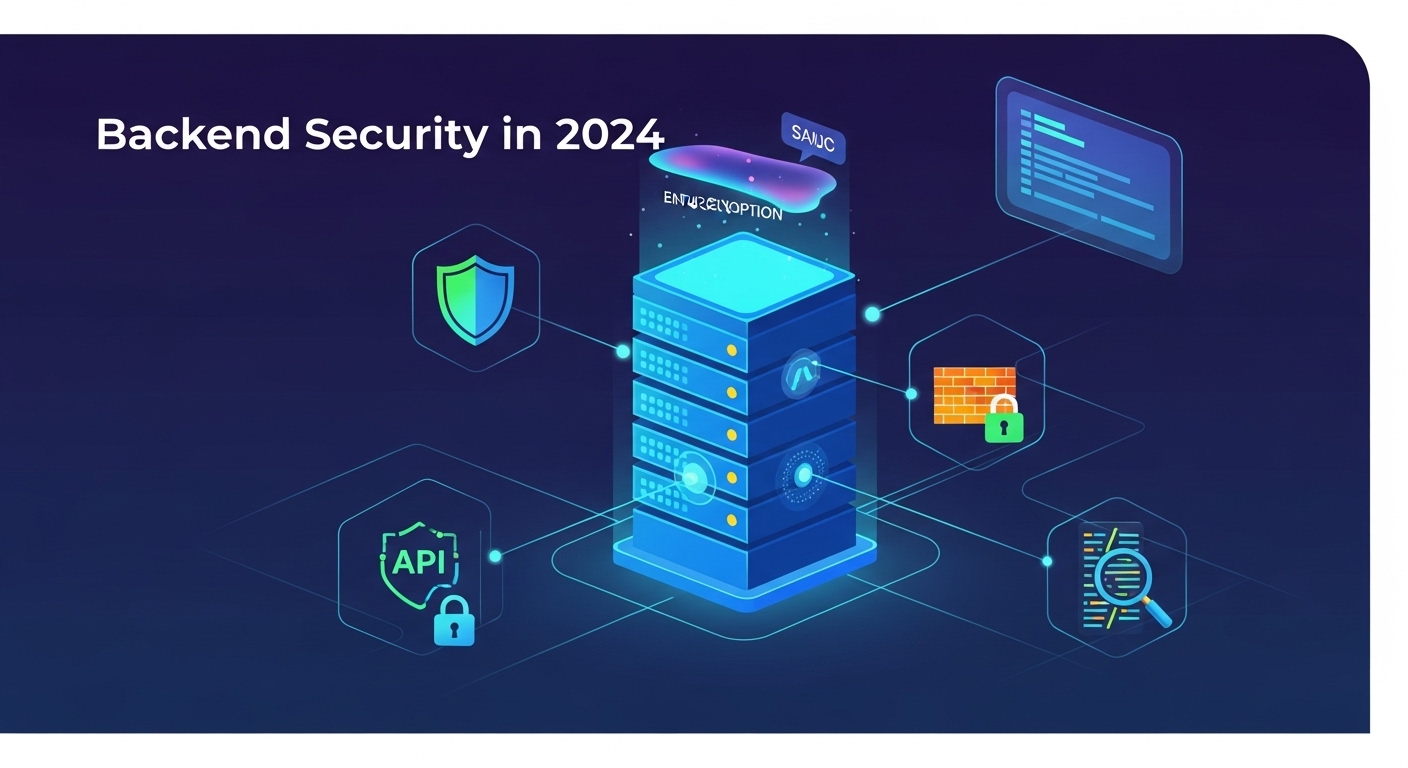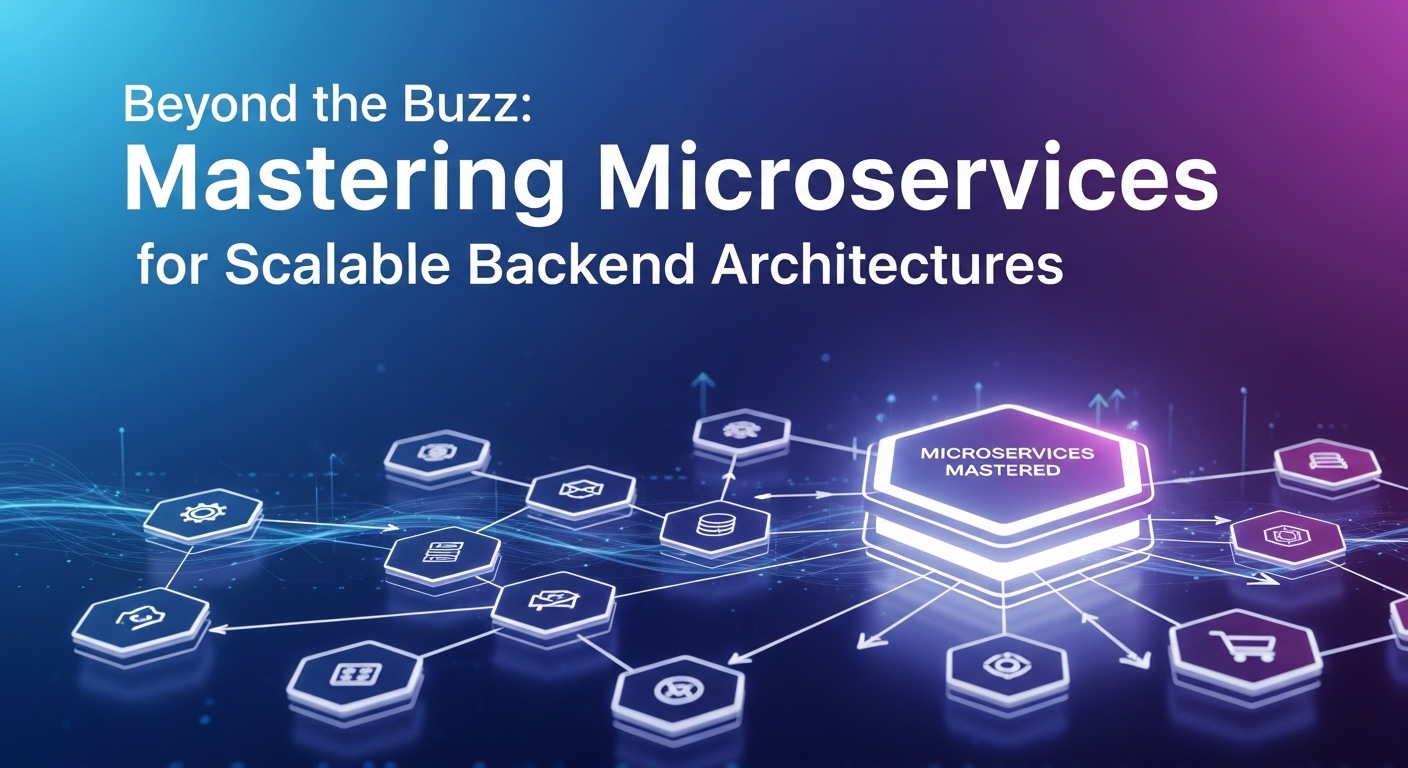The Shifting Landscape of Backend Development
For decades, the world of backend development has been built on a familiar foundation: servers. Whether physical machines humming in a data center or virtual instances in the cloud, the concept of a persistent, always-on server has been central to how we build applications. But what if we could build robust, scalable backends without ever thinking about managing a server again? This isn’t a futuristic dream; it’s the reality of serverless architecture, a paradigm that is fundamentally reshaping modern backend development.
If you’re a backend developer, you’ve likely heard the term ‘serverless’ thrown around. It’s often hailed as a revolutionary approach that promises lower costs, infinite scalability, and increased developer productivity. But it also comes with its own set of complexities and trade-offs. Is it just another buzzword, or is it truly the future? In this deep dive, we’ll unpack serverless architecture, compare it to traditional approaches, and help you decide if it’s the right choice for your next project.
Demystifying Serverless Architecture: Beyond the Buzzword
First, let’s clear up the biggest misconception: serverless doesn’t mean there are no servers. Of course, there are servers! The key difference is that you, the developer, don’t manage them. The cloud provider (like AWS, Google Cloud, or Azure) is responsible for provisioning, maintaining, and scaling the server infrastructure. You simply write and deploy your code, and the provider executes it in response to specific events.
What ‘Serverless’ Really Means
At its core, serverless is an execution model where the cloud provider dynamically allocates and manages the resources required to run a piece of code. Your application is broken down into individual functions, and these functions are only run when triggered. When a function is not in use, it doesn’t consume any resources, and you don’t pay for it. This event-driven, pay-as-you-go model is the heart of the serverless promise.
Key Components: FaaS, BaaS, and More
Serverless is an umbrella term that encompasses several services. The two most prominent are:
- Functions as a Service (FaaS): This is the compute part of serverless. You upload small, single-purpose functions (e.g., AWS Lambda, Google Cloud Functions). These functions are stateless and are triggered by events like an HTTP request, a new file upload to a storage bucket, or a message in a queue. This is the most common pattern associated with serverless backend development.
- Backend as a Service (BaaS): This refers to third-party services that handle backend functionality for you. Think of services like Firebase or AWS Amplify, which provide ready-to-use authentication, databases, and storage. While you don’t write the backend code yourself, it operates on a serverless principle—you use the service without managing the underlying infrastructure.
Serverless vs. Traditional Backend: A Head-to-Head Comparison
To truly understand the impact of serverless, it’s helpful to compare it directly with the traditional, server-based model (like a monolithic application or microservices running on EC2 instances or containers).
Scalability and Elasticity
In a traditional model, you have to plan for scale. You provision servers to handle peak load, which means you’re often paying for idle capacity. Scaling up or down requires manual intervention or complex auto-scaling configurations. With serverless, scaling is automatic and inherent to the platform. If your API gets a thousand requests in a minute, the provider spins up a thousand instances of your function to handle them in parallel. When the traffic subsides, it scales back down to zero. This fine-grained, automatic elasticity is a massive win for applications with unpredictable traffic patterns.
Cost-Effectiveness: The Pay-as-You-Go Advantage
The serverless cost model is a game-changer. You are billed based on the number of executions and the precise compute time your functions use, often measured in milliseconds. If your code isn’t running, you’re not paying. For a traditional server, you pay for it to be running 24/7, regardless of whether it’s processing requests or sitting idle. For startups, side projects, or applications with sporadic usage, serverless can be dramatically cheaper.
Developer Experience and Productivity
Serverless allows developers to focus purely on writing business logic. There’s no need to worry about operating system patches, server provisioning, or load balancing configurations. This abstraction of infrastructure—often called ‘NoOps’—can significantly accelerate the development lifecycle. Developers can ship features faster, focusing on what provides value to the user rather than on backend maintenance. This focus is a core tenet of modern backend development philosophy.
Performance and Latency Considerations
Here’s where the comparison gets more nuanced. A potential drawback of serverless is the ‘cold start’. If a function hasn’t been invoked recently, the cloud provider may need to initialize a new container to run it, which can add latency (from a few hundred milliseconds to several seconds). For functions that are frequently used (‘warm’), the performance is excellent. However, for latency-sensitive applications, this initial delay can be a deal-breaker. Traditional, always-on servers don’t have this problem, as the application is always loaded in memory, ready to respond.
When to Choose Serverless for Your Backend Development
Serverless is not a silver bullet. It excels in certain scenarios but may be a poor fit for others.
Ideal Use Cases
- APIs and Microservices: Building RESTful or GraphQL APIs with FaaS is a perfect use case. Each endpoint can be a separate function, allowing for independent scaling and deployment.
- Asynchronous Workloads: Tasks like image processing, data transformation (ETL), or running scheduled jobs are ideal for serverless functions. They can be triggered by an event and run in the background without tying up a primary server.
- Real-time Data Processing: Serverless functions can easily be triggered by streams of data from IoT devices or event buses like Kafka, allowing for real-time analysis and response.
- Webhooks and Chatbots: Any event-driven, short-lived task is a prime candidate for a serverless function.
When Traditional Architecture Still Wins
- Long-Running Processes: Serverless functions typically have execution time limits (e.g., 15 minutes for AWS Lambda). For tasks that require hours of continuous computation, a traditional server or container is a better fit.
- Predictable, High-Traffic Workloads: If your application has very high, constant traffic, the cost of a provisioned server might actually be lower than the per-request cost of serverless at scale.
- Specialized Compute Requirements: Applications that require fine-grained control over the hardware, like GPU-intensive machine learning tasks, are often better suited for dedicated instances.
The Challenges and Pitfalls of Going Serverless
Before jumping in, it’s crucial to understand the potential downsides.
Vendor Lock-in
Your functions are often tightly coupled to the cloud provider’s ecosystem (e.g., their API Gateway, event sources, and IAM roles). Migrating a complex serverless application from AWS to Azure can be a significant undertaking.
Cold Starts
As mentioned, the latency from cold starts can be a real issue. While there are strategies to mitigate this (like provisioned concurrency), it’s an inherent trade-off of the model.
Monitoring and Debugging Complexity
Debugging a distributed system of dozens or hundreds of functions can be more complex than debugging a monolith. It requires specialized observability tools that can trace a single request as it hops between multiple functions and services.
Is Serverless Your Next Backend Move?
Serverless architecture is more than just a trend; it’s a powerful evolution in backend development that offers compelling advantages in scalability, cost, and developer velocity. It forces us to think about problems in a more event-driven, modular way. However, it’s not a replacement for all traditional architectures. The best approach often lies in understanding the strengths and weaknesses of each model and choosing the right tool for the job. For many modern applications, especially those starting fresh, a serverless-first approach makes a tremendous amount of sense. For existing systems, a hybrid model, where new features are built as serverless functions that integrate with a traditional backend, can be a pragmatic way to get the best of both worlds. The question isn’t whether serverless will replace traditional backends entirely, but rather, where does it fit in your technology toolkit? The answer will define the next generation of powerful, efficient, and scalable applications.


